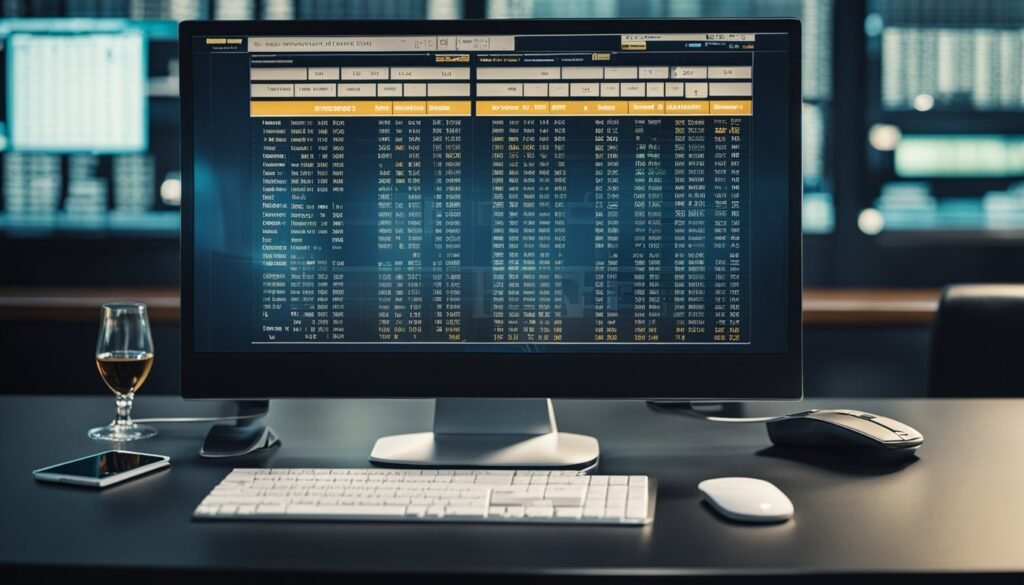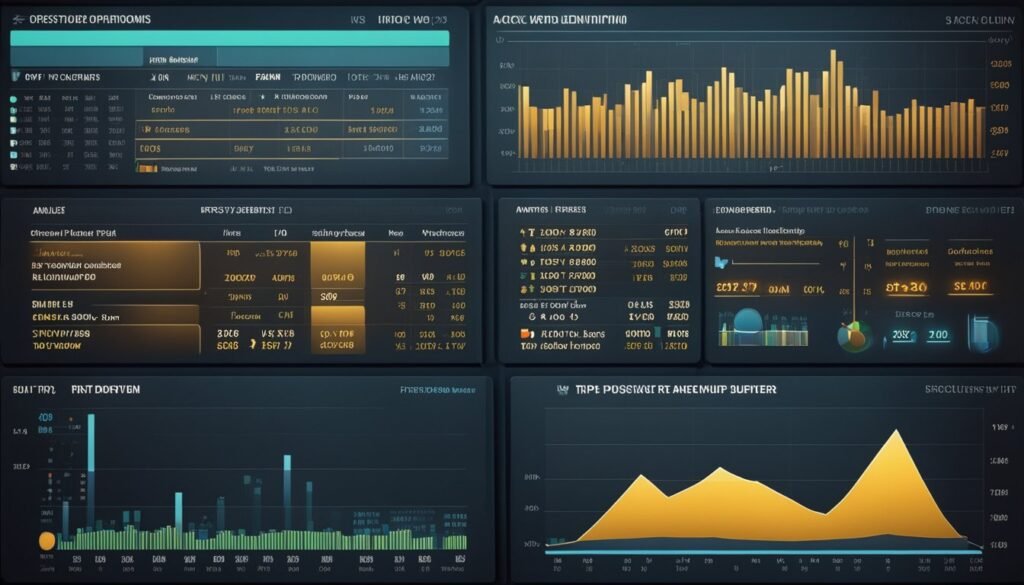Understanding Pokies RTP
Return to Player (RTP) is a term commonly used to describe the percentage of all wagered money a pokie machine will return to players over a period of time. It represents the pokie’s theoretical payout efficiency and is expressed as a percentage. Generally, this value is calculated based on a large number of spins, often in the millions.
For example, if a pokie machine has an RTP of 95%, theoretically, for every $100 wagered, the machine would pay out $95 over time, with the casino retaining $5 as profit. The higher the RTP, the better the potential return for the player.
| RTP (%) | Interpretation |
|---|---|
| Below 94 | Considered low for online |
| 94-96 | Average for online |
| Above 96 | Competitive and player-friendly |
Online pokies usually offer greater RTPs compared to brick-and-mortar venues, where figures over 92% are rare. A pokie’s RTP is important for players to consider as it can influence their longer-term play outcomes, although it does not guarantee individual session results.
Factors Influencing RTP:
- Game design and features
- Casino’s operational considerations
- Regulatory requirements
Understanding the mechanics behind RTP helps players select games that align with their gaming preferences and bankroll considerations. It’s essential for a balanced gaming experience but should always be viewed as a guide rather than an absolute predictor of results.
Factors Influencing Pokies RTP

The Return to Player (RTP) of pokies is not arbitrary; it is influenced by specific factors that include game design, regulatory requirements, and the skill level of the player.
Game Design and Complexity
In the design of pokies, the probability of winning combinations and the pay-outs for these combinations heavily determine the RTP. A game with simple mechanics may have a different RTP compared to one with intricate bonus features or multipliers.
Regulatory Requirements
The RTP is also subject to the regulations set by gaming authorities. In Australia, gaming machines are required to comply with minimum RTP percentages, which ensure fairness and transparency in gambling.
Player Skill Level
While pokies are mainly games of chance, the RTP can be influenced by a player’s skill. Games that offer choices or strategies can result in varying RTPs depending on the decisions made during gameplay.
Methods of RTP Calculation

Return to Player (RTP) is the quantification of the percentage of total bets placed on pokie machines that are paid back to players over time. The calculation of RTP involves statistical analysis and is pivotal for both players and casinos in understanding the potential payback of a game.
Theoretical RTP is derived from the game design. It calculates the total amount of money wagered on a machine and subtracts the proportion retained by the casino as profit. Theoretical RTP is determined by assessing every possible combination on an electronic gaming machine (EGM), thereby ensuring a thorough outcome.
Actual RTP measurement involves real-world data. In some Australian jurisdictions, this involves aggregating the total wagers and the total returns paid to users. For instance, in Victoria, it is assessed annually for all EGMs operating in a specific venue, as per the Gambling Regulation Act 2003 (Vic).
- Simulated RTP: This method uses computer programs to simulate numerous game rounds. By evaluating these simulations, analysts can estimate what the RTP might be over an extended period of game play.
Key considerations in RTP analysis include the specific game type and jurisdictional requirements, as methods may vary. Assessing RTP ensures that games remain fair and within the stated guidelines for payback to players. However, it is crucial to note that RTP is a long-term statistical average, not a guaranteed return per session.
Analysing RTP for Pokies Selection

When selecting a pokie machine, savvy players often consider the Return to Player (RTP) as a critical factor. RTP represents the theoretical portion of bets that a pokie machine will pay back to players over time. It is expressed as a percentage, with a higher RTP suggesting a potentially more player-friendly game.
Key Considerations in RTP Analysis:
- Theoretical Percentage: RTP is not a guarantee but gives an estimate over an extensive number of plays.
- House Edge: A machine with an RTP of 96% implies a house edge of 4%, which is the casino’s profit margin.
Steps in Analysing RTP for Pokie Selection:
- Identify the RTP: Locating the RTP is the first step. Casinos may list the RTP, or it can sometimes be found within the game’s information section.
- Compare Rates: Look for machines with higher RTP percentages, which typically range around 92% to 98% in Australia.
- Factor in Variability: A higher RTP does not guarantee wins; variability also affects gameplay.
Practical Assessment:
| Game Title | RTP | Variance |
|---|---|---|
| Game A | 97% | High |
| Game B | 94% | Medium |
| Game C | 96% | Low |
In summary, a machine with a higher RTP is preferable for players. However, they should also consider game variance and personal preference in gameplay and risk. Assessing RTP is part of a broader strategy for informed pokie selection, which also includes understanding bankroll management and gameplay mechanics.
Strategies for Playing High RTP Pokies
When seeking to increase one’s chances at pokies, players should gravitate towards games with a higher Return to Player (RTP). RTP is the percentage of wagered funds a pokie machine will pay back to players over time, and choosing a game with a high RTP is a strategic move.
Finding High RTP Games:
Players are advised to research and select pokie games that boast an RTP of 97% or higher. This information is often transparent and can be found on the game developer’s website or in the game’s information section.
Bankroll Management:
A sound bankroll strategy involves setting a limit on how much to wager and sticking to it. It’s essential for players to play within their means and not chase losses, even when playing high RTP pokies.
Understanding Game Variance:
The variance of a game affects the payout frequency. High variance means less frequent, but larger wins, while low variance means more frequent, but smaller wins. Players should choose a variance that matches their playing style and bankroll.
Maximise Your Play:
To take full advantage of high RTP games, one should always play the maximum bet when possible. This can sometimes unlock additional features or bonuses that can lead to better payouts.
When to Stop:
A disciplined approach is vital. One should set a winning goal and stop playing once it’s reached. Similarly, it’s important to know when to call it a day after successive losses, regardless of the RTP.
RTP Auditing and Certification
Return to Player (RTP) is a key metric in assessing the fairness of pokie machines. It represents the percentage of total bets that are returned to players over time. Certification and audit processes are essential to ensure integrity and trust in the gaming industry.
Certification bodies, such as iTech Labs, are tasked with the regular scrutiny of pokie machines. Their role is to validate that the RTP advertised by casinos aligns with the outcomes over a significant sample size.
The Audit Process includes several layers:
- Data Collection: Auditors compile extensive logs of game transactions and outcomes.
- RTP Calculations: Auditors apply statistical methods to determine the actual RTP from the collected data.
- RNG Evaluation: An in-depth analysis of the Random Number Generator ensures that the outcomes are indeed random and unbiased.
Upon successful audit, pokie machines and their operators are awarded certificates. These certificates are suggestive of compliance with industry standards and often serve as a reassurance to players about the game’s fairness.
Transparency is key, as audit results are typically shared with players, either directly or through summaries available on the casino’s website.
It’s crucial to note that while RTP provides a theoretical percentage, individual gaming experiences may vary due to volatility and short-term variability.
Casinos and software developers often flaunt their auditing certifications, as they reflect their commitment to fair play and can help in cultivating player trust.
Impact of Volatility on RTP
When discussing Pokies, Return to Player (RTP) and volatility are two crucial factors that players often consider. While RTP indicates the average amount a pokie machine pays back to its players over time, volatility describes the risk involved in playing the game.
- High Volatility: Pokie machines with high volatility are characterised by less frequent payouts. However, when these machines do pay out, the winnings tend to be larger. High volatility pokies appeal to players with a preference for significant wins and the patience to wait for them.
- Low Volatility: In contrast, low volatility pokies offer more frequent payouts, but these payouts are generally smaller. Such games suit players looking for a steadier play experience with less risk.
One might assume a direct correlation between volatility and RTP, but the reality is more nuanced. A high volatility pokie can have the same RTP as a low volatility one; what differs is the pattern of payouts. The RTP is consistent over an extended number of spins, often in the millions, and does not predict short-term outcomes.
RTP is measured as a percentage, typically ranging from 94% to 99%. For instance, a pokie machine with a 96% RTP will pay back an average of $96 for every $100 wagered. Importantly, RTP is a theoretical statistic that should be treated as a guide, not as a guarantee of personal return.
Volatility does not affect the overall RTP but rather the distribution and frequency of winnings. Players should consider both RTP and volatility to find a pokie that matches their playstyle and risk tolerance.
Comparing Land-Based and Online Pokies RTP
When assessing pokies’ return-to-player (RTP) percentages, a notable difference emerges between land-based and online platforms. Online pokies typically offer higher RTP percentages compared to their land-based counterparts. This is primarily due to the lower overhead costs associated with the operation of online casinos.
Land-based pokies have RTP percentages that can vary considerably, but they often fall within the range of 87% to 90%. These machines require significant physical space and are part of a higher maintenance entertainment offering, leading to a lesser proportion of bets being returned to players over time.
In contrast, online pokies generally provide RTP percentages that are more favourable to players, frequently ranging from 92% to 98%. The digital nature of these games reduces operational expenses, enabling online casinos to offer better returns. It is not uncommon for online players to have access to pokies with RTPs above 95%, substantially enhancing their long-term probability of winning in comparison to playing in land-based establishments.
Here is a concise comparison in table format:
| Platform | RTP Range | Notable Features |
|---|---|---|
| Land-Based | 87% – 90% | Lower RTP due to higher operation and maintenance costs |
| Online | 92% – 98% | Higher RTP owing to lower overhead costs |
Players keen on maximising their potential returns are thus more likely to find online pokies more appealing. However, they should always verify the RTP of individual pokies, as percentages can vary between games, regardless of the platform.
Myths and Misconceptions About Pokies RTP
In the landscape of online pokies, the term Return to Player (RTP) is frequently discussed, but it is often accompanied by numerous myths and misconceptions.
- Guaranteed Returns: A common misconception is that a higher RTP guarantees a win in the near future. However, RTP is a theoretical calculation based on an extended period of play and millions of spins. It does not predict immediate payouts.
- Due for a Win: Some players believe that if a game has not paid out in a while, it is ‘due’ for a big win. This is a fallacy; pokies operate on a Random Number Generator (RNG), ensuring that each spin is independent of the last.
- Changing Odds: Another myth is that casinos can adjust the RTP to their liking. In truth, the RTP is set by the game developer and cannot be altered by the casino for a licensed game.
- Bonus Rounds Influence: Players may think bonus rounds and jackpots have higher RTP rates. Typically, these features follow the overall RTP of the game, but individual session RTP can vary widely.
| Myth | Fact |
|---|---|
| Games with higher RTP will always pay out more | RTP is theoretical and based on long-term play |
| A game is due for a win if it hasn’t paid out recently | Each spin is random and independent |
| Casinos can change RTP rates as they wish | RTP is set by the developers and cannot be altered by the casino |
| Bonus rounds and jackpots have separate RTPs | They are typically included in the game’s overall RTP |
Understanding these misconceptions is crucial for players who wish to establish realistic expectations when playing pokies online.
Improving Player Awareness of RTP
Players often gravitate towards pokies without a full understanding of the Return to Player (RTP) rate and its impact on their gameplay. It’s crucial that players are made aware of RTP as it informs them of the potential return on their wagers over time. A higher RTP indicates a better chance of winning back a portion of their bets.
Strategies for Enhancing Player Knowledge:
- Education: Casinos and game developers should provide clear explanations of RTP within their games’ help or info sections.
- Transparency: Displaying RTP figures prominently on both online platforms and physical machines can foster informed decision-making.
- Guidance: Customer support teams can be trained to explain RTP and its implications effectively to players.
Useful Tips for Players:
- Check RTP rates before playing a pokie machine.
- Aim for games with a higher RTP (preferably above 97%).
- Remember that a high RTP does not guarantee wins but suggests a higher likelihood of winning over time.
By increasing the visibility of the RTP and its implications on gaming outcomes, players can strategically select pokies that align with their personal preferences for risk and reward. Casinos have a responsibility to enhance the gaming experience through education, ultimately leading to a more knowledgeable player base.
Frequently Asked Questions
When examining the intricacies of pokie machines, players often seek clarity on how they function and what their odds are. The following frequently asked questions aim to demystify the aspects surrounding the Return to Player (RTP) percentages and other related topics of pokies in Australia.
What determines the payout percentage of poker machines in Australia?
In Australia, the payout percentage, or Return to Player (RTP), of poker machines is determined by the game’s programming which complies with standards set by regulators. These standards ensure that machines offer a certain level of payout over time to provide fair gaming experiences.
Can players influence the Return to Player (RTP) on electronic gambling machines?
Players cannot influence the Return to Player on electronic gambling machines as the RTP is a fixed statistical calculation built into the machine’s software and is not affected by gameplay strategy, timing, or frequency of play.
Which methods are most effective for maximising winnings on pokies?
To maximise winnings on pokies, players should look for machines with higher RTP percentages, as these potentially offer a better chance of receiving a return over time. Understanding the game’s volatility—how often and how much it pays out—can also aid in selecting a machine that aligns with their risk preference.
Are payout rates for poker machines publicly available or regulated in Australia?
Payout rates for poker machines are regulated in Australia, and the minimum RTP percentage that gaming machines must provide is stipulated by law in each state or territory. However, the specific RTP for each machine is not always publicised, making it challenging for players to identify the payout rates of individual pokies.
What are the characteristics of high-paying pokie machines?
High-paying pokie machines typically have a higher RTP percentage, indicating that a larger proportion of the total bet amount will be returned to players over time. These machines may also exhibit low to medium volatility, leading to more frequent but smaller wins.
Does betting size affect the odds of winning on pokie machines?
The odds of winning on pokie machines are not directly affected by betting size as the RTP and the game’s randomness are constant for all bet amounts. However, some games may offer progressive jackpots or bonuses that are only available when making larger bets, potentially affecting the overall payout structure.
Share:






